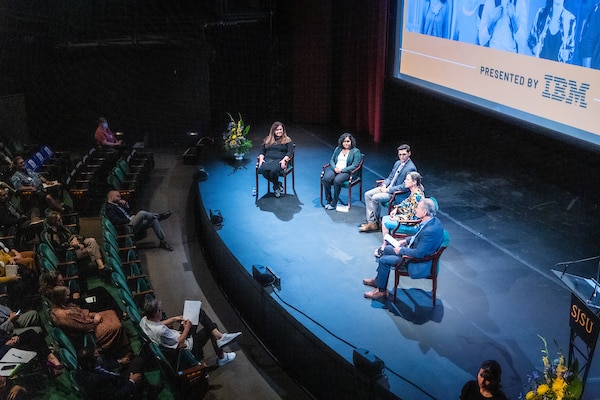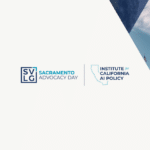The two most pernicious challenges in public education–the opportunity gap and the teacher shortage–can be addressed with one solution: diversifying our teaching workforce.
A diverse educator workforce benefits all students, and boosts the successful engagement of students of Color. However, there are not enough diverse candidates in our state’s teaching colleges, and districts across the state have difficulty retaining the teachers they do hire. The result: 77% of California students are Asian American, Black, Latino, and/or Native American, but only 27% of teachers share those demographics.
The Lurie College of Education at San José State University is bucking that trend. Lurie has increased the number of students in its teaching credential programs by over 40 percent in three years, and the entirety of that increase has come from an increase in the numbers of first-generation and BIPOC students.
SVLG and IBM recently held the 2022 Teacher Diversity Forum to highlight SJSU’s Lurie College and scale its success.
For SVLG, closing opportunity gaps is an economic imperative; California’s competitiveness relies on our education system graduating diverse students prepared for innovation-economy careers. As SVLG CEO Ahmad Thomas noted from the stage: “Diversity is a bottom-line issue. Diverse teams consider more perspectives and variables in their decisions; they are more innovative, and more profitable.”
IBM California Senior State Executive Laura Guio, who sponsored and introduced the Forum, agreed, speaking to IBM’s commitment in concrete terms: “Diversifying the workforce is the biggest opportunity of the decade, and IBM is devoted to this mission. We have made a public commitment to prepare learners of all ages for 21st Century jobs and to skill 30M people worldwide by 2030, with a focus on underrepresented communities.”
Keynote speaker Professor Marcos Pizarro challenged the audience–elected officials, trustees, and superintendents from across the Bay Area in positions to hire–to delve deeper on why diverse teachers are necessary. Teachers of Color, he shared, bring to their classrooms a “relational accountability” to students of Color and their communities, heightened awareness of students’ experiences with racism and injustice, and a commitment to “construct a space for students that allows them to dream and live those dreams.”
Senator Dave Cortese moderated the evening’s first panel and asked the all-important question: how has Lurie successfully recruited diverse teacher candidates? Professors Rebeca Burciaga, Saili Kulkarni and Luis Poza explained that they center underrepresented communities, integrating ethnic studies, bilingual teaching, and disability-centered, culturally-sustaining professional development opportunities into the curriculum, and creating affinity groups. Milpitas Superintendent Cheryl Jordan added that Lurie College also worked with her to build culturally-aware student pathways from high school to college to pre-service teaching.
Assemblymember Ash Kalra moderated the second panel, featuring program alumni and current teachers Erin Enguero, Kaitlyn Chang and Alberto Camacho. A disability advocate in her own right, Erin was inspired to work with professors and mentor teachers that advocated for her to secure appropriate assistive technology for her classroom. Kaitlyn felt empowered by being placed with a teaching mentor who shared her lived experiences and professional focus on Special Education. And Alberto shared both frustration with the differential treatment he faced during the program, a challenge that propelled him to create a student advisory council, and profound gratitude for the administration’s substantive responses to his grievances.
Senator Cortese and Assemblymember Kalra asked what local and state governments could do. Specific solutions abounded: earmarked funding for long-term professional development relationships between teacher colleges and K-12 districts, teacher residencies, housing, and cost offsets for credentialing tests—as well as flexibility for teachers to deliver cariño-centered education tailored to students’ individual needs.
The Forum ended with a networking reception to build teacher recruiting, training, and hiring partnerships, and SVLG and SJSU are surveying registrants to catalyze further action.
If you did not attend the Forum but would still like to help increase and diversify the teacher workforce, please let us know. There are several ways your company or organization can make a difference, from political advocacy to sponsoring scholarships for teacher candidates to joining the Bay Area K-16 Education Collaborative, which brings together education and industry to create streamlined pathways from high school to college to career.




